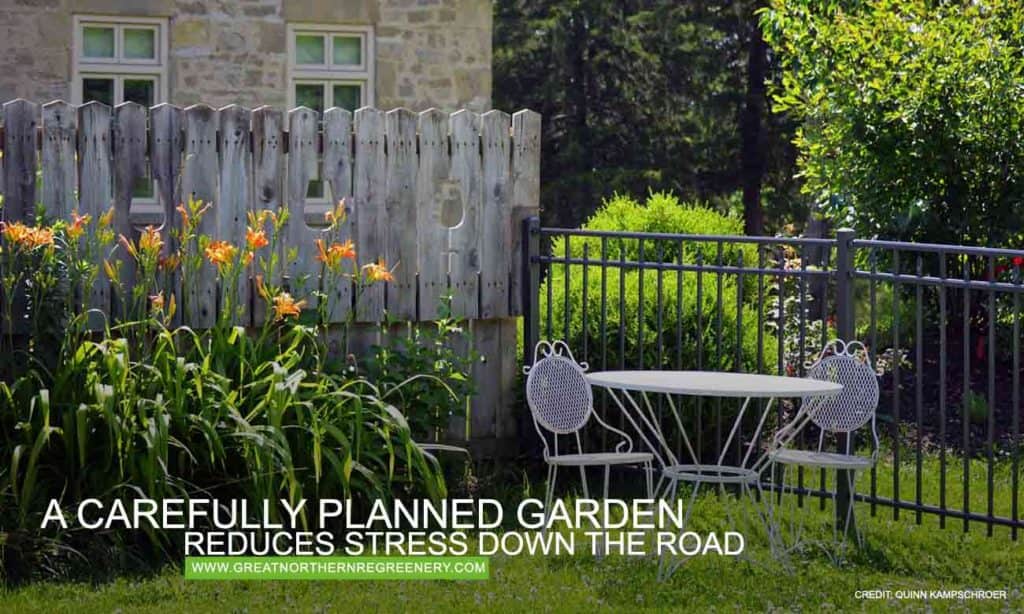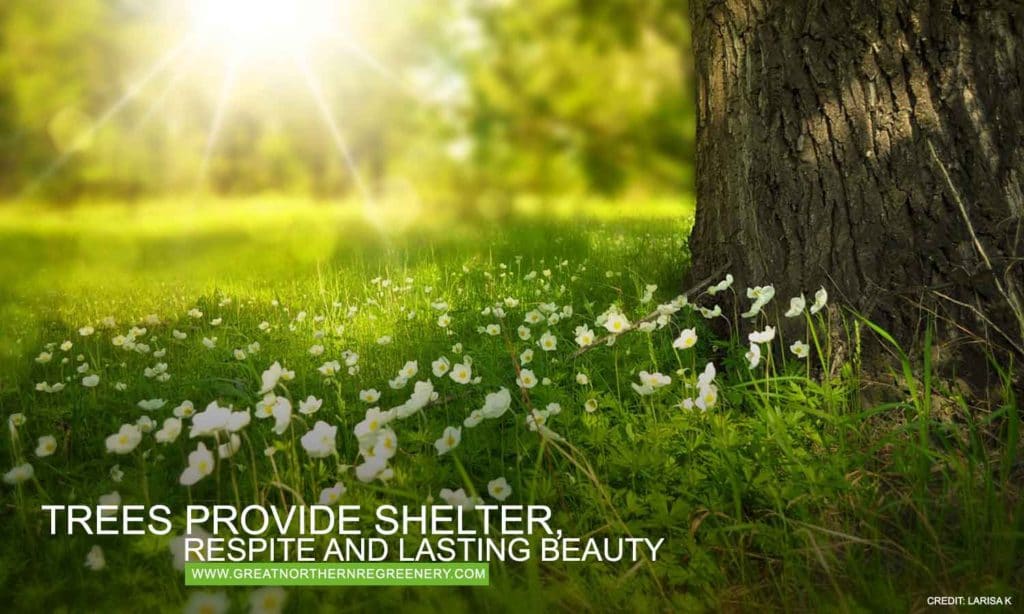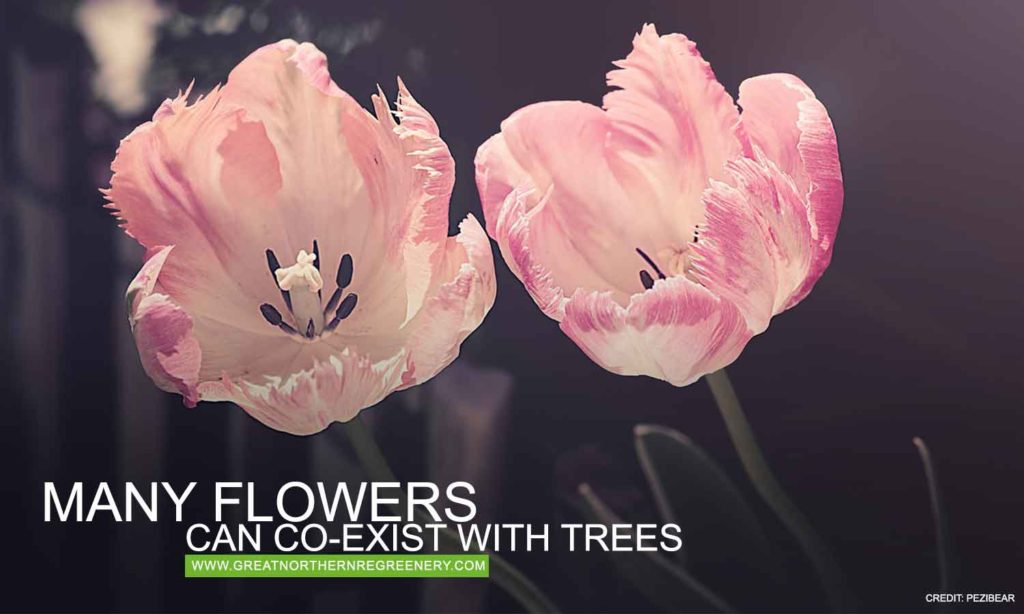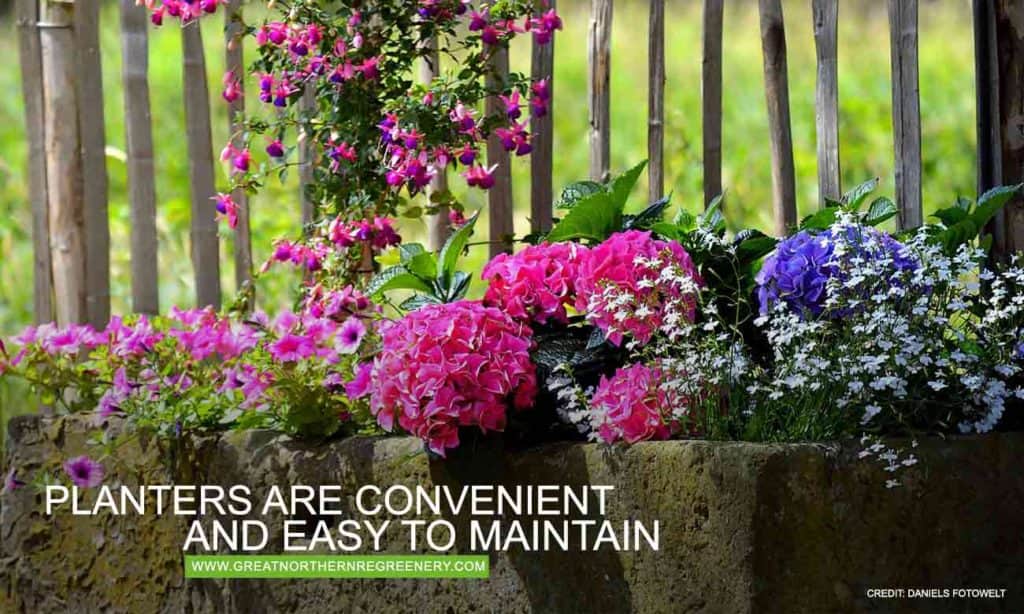A well-maintained yard and garden gave been proven to increase property value while providing immeasurable satisfaction to homeowners. That extra touch of “green” goes a long way! While the benefits of trees and plants are well documented, the process of planning a landscaping project may be mysterious to many. With so many choices to consider, the selection process can seem overwhelming. Fortunately, there are a wealth of low-maintenance landscaping options for busy homeowners, none of which compromise in the aesthetic department. Start by defining your needs and interests before moving on to the planting process.

Evaluating your Needs
Before heading to your local nursery or tree provider, take stock of your current surroundings. Knowing what you’re looking for will help save time and money, avoiding regrets down the road. It also helps to consider the breadth of your knowledge and experience, and whether you have access to expert assistance down the road if required. If a low-maintenance property is a priority, rest assured that this can be attained with a little careful planning. An important first step is defining which landscaping features matter most to you as a homeowner.

- Shade – Some benefits of shade are immediately apparent: a picnic under the leaves, or a relaxing reprieve from the summer sun. Other advantages may not be evident to most homeowners. A shade tree can lower the cost of cooling your home during the summer months. By planting trees strategically, your hydro bill can be significantly reduced. This benefit extends to the winter as well, since shade trees serve to insulate a home. By providing a windbreak on your property, they will lower heating costs.
Keep in mind that shade trees don’t negate the possibility of a flower garden; if you’re looking forward to spring blossoms, you’ll need to select specimens that compliment your planned tree arrangement. Many flowers and plants thrive in shaded conditions! Consult a local tree expert to make sure that your tree selections don’t interfere with any long-term gardening goals.

- Colour – Brilliant fall colours are cherished by Canadians far and wide, and they add a timeless charm to any property. If those bright reds and oranges are a landscaping goal, you have a range of deciduous trees to choose from. While these trees require leaves to be raked in the autumn, certain species produce fewer leaves than others, reducing seasonal maintenance. Also, the more trees you have, the more leaves you’ll be raking! For larger properties, a mix of deciduous and coniferous trees will help keep maintenance requirements low, while still providing a colourful display come fall.
For time-strapped gardeners hoping for bright florals, specimens should be selected with the surrounding environs in mind. Consult a professional to make sure you’re getting the colour you want, without adding unnecessary labour. Soil hydration levels, the direction of sunlight, and the presence of pets or children – all these factors must be considered if the goal is to avoid painstaking care later on. Whether dispersed around your property or concentrated in neat beds, bright blooms make a wonderful first impression.
- Privacy – Trees and plants can be used to make your property into a private oasis. While trees protect property from wind and precipitation, they also reduce excess noise, replacing it with rustling leaves and birdsong. For many, home is a retreat from their busy work lives. This is increasingly true among city dwellers, for whom the commute home can be every bit as hectic as the workday itself. For some, privacy fences may seem like an obvious choice. However, a wood fence will rot, requiring seasonal maintenance and repair.
Local bylaws must be considered when building any fence, which could hamper your privacy goals (since the maximum allowable fence height may only shield at the ground level). For a reliable, attractive privacy screen, trees and hedges are the perfect low-impact solution.
Making your Selection
Once you know what your long-term goals are, it’s time to decide which specimens (and techniques) will serve your needs. When evaluating the following options, keep in mind that every property has varying irrigation requirements and soil make-up. Expert advice will help you avoid any mishaps down the road.
Popular Low-Maintenance Choices
These tried-and-true options will attain the look you want, without all the extra work that busy homeowners wish to avoid.

- Plants instead of grass – While the classic look of green grass is superficially appealing, lawns require a surprising amount of upkeep. Replacing sections of your lawn with plants will cut down on watering needs, particularly if you select varieties suited to xeriscaping (a landscaping trend that relies on rainfall). Mulch or moss are other suitable substitutes since they help retain moisture. Clover lawns require less water than grass lawns and are more insect-resistant.
- Coniferous trees – These trees grow rapidly, making them a good choice for homeowners looking to create a privacy screen. If you live in a particularly wet area, you’ll need to consider the potential of an insect infestation, which will necessitate swift treatment. Cypress trees are a great choice in this case, due to their resistance to insects. Another obvious bonus of these trees is that there’s no raking involved! Deciduous trees are more likely to require maintenance as they age, which could include cabling and bracing to prevent damage. For homeowners enamoured of fall colours this should be no problem, but if your priority is ease of care, coniferous trees will remain sturdier as they age.
- Shrubs – Juniper and Viburnum are hardy, all-purpose options. While shrubs will require pruning, they are another excellent choice for anyone seeking privacy. Shrubs will require less fertilizing, watering and general upkeep than many flowers will (especially annuals). They are also less susceptible to damage from the elements, reducing long-term maintenance costs.

- Planters – Planting flowers or ferns in containers allows you to move them around your property as desired. This means you can easily change the look of your garden, but it also means you can take advantage of shifting light levels, which can alter as trees grow and seasons progress. Planters can help your specimens avoid pests and disease, reducing stress down the road. Plastic planters are inexpensive and easy to move. If you like the look of wood planters, ask about rot-resistant varieties to save on eventual replacements or repair.
- Native species – When considering flowers and trees, keep in mind that local species are more likely to withstand changing weather conditions without assistance. Native trees will also be more resistant to disease. The Eastern White Pine or the Arborvitae are reliable choices, or- if you’re looking for deciduous varieties – the White Birch (which grows in a variety of soil types). Examples of low-maintenance native flowers include Trilliums and Wild Columbine. These flowers prefer some shade, so they’re ideal for planting on a lot populated by trees. If you’re looking for native flowers more suited to direct sunlight, consider New England Asters or Grey-Headed Coneflowers. A significant bonus of cultivating native blossoms is that they attract native pollinators as well!
Planting projects can seem overwhelming, particularly if you’re short on time. The evolving landscaping industry is continually introducing new technologies to address this need. This makes it easier to decide on specimens, and it makes it easier to get reliable solutions to any issues that arise down the road. To discuss which trees might best serve your landscaping needs, call (905) 775-7444. Serving the Barrie and Bradford areas, the arborists at Great Northern ReGreenery can help make your landscaping process stress-free.





